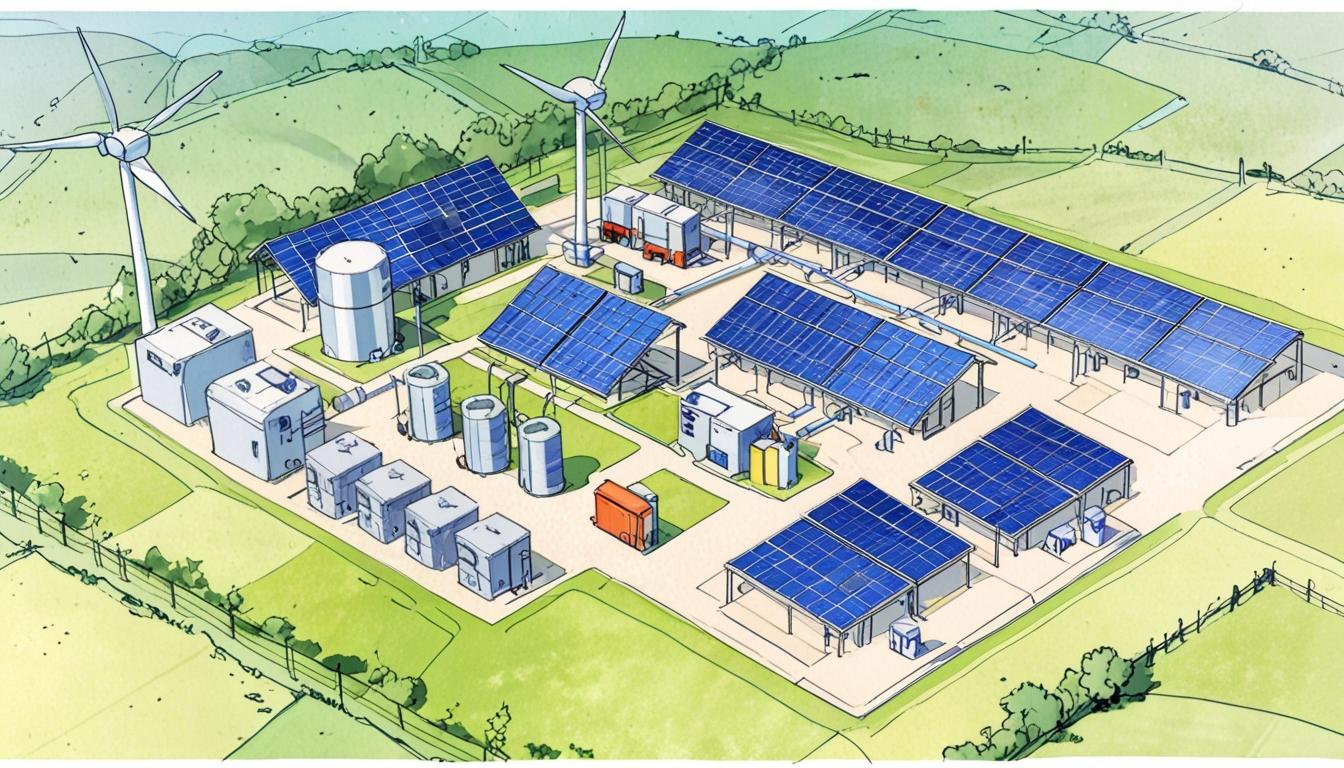The UK's AI Action Plan is set to revolutionise digital innovation across multiple sectors, notably in the power and utilities landscape. As the nation advances its energy production and consumption strategies, the implications of this initiative are complex and multi-faceted, particularly given the escalating demand for data centres.
The energy sector faces increasing pressure due to the substantial electricity requirements associated with data centres, which require significant amounts of power as they support AI operations. According to a recent Gartner report, by 2027, 40% of existing AI data centres are expected to face operational constraints due to power availability. This situation complicates the UK’s ambitions for a more sustainable energy grid, particularly as it pursues net zero targets while dealing with the unpredictable nature of renewable energy sources such as wind and solar.
Kirby Smedley, Managing Director at Slalom, highlighted the urgent need for the energy sector to innovate in terms of energy solutions. As renewable energy output relies heavily on weather conditions, maintaining a consistent electricity supply is paramount. This may involve establishing backup power sources or integrating energy storage systems to compensate for sudden drops in renewable energy production.
The demand for water is another critical consideration, as data centres require substantial cooling resources, further straining existing water supplies, especially in areas already facing stress. Thus, addressing the energy infrastructure challenge necessitates a comprehensive approach that accounts for both water and power supply in the context of the UK's environmental goals.
Proactive policy and regulatory measures will be essential for ensuring that the energy demands of the rapidly evolving AI sector do not outpace the capacity for supply. The UK’s regulator, Ofgem, is taking steps to enhance connections reform, with planned implementation starting in 2025. This reform aims to create flexible regulations that can quickly adapt to the changing energy landscape, particularly as AI technologies drive increased demand for electricity.
Moreover, initiatives like the Data Sharing Infrastructure (DSI), which encourages data exchange among stakeholders, will be vital for optimising operations and bolstering the resilience of the energy system. This shared data approach will enable better decision-making and resource allocation, critical for integrating AI solutions with renewable energy sources.
The AI Action Plan opens avenues for both challenges and investment opportunities within the power and utilities sectors. To meet growing energy demands, a focus on enhancing system flexibility through battery storage and innovative demand management strategies will be necessary. Battery storage is essential for capturing excess renewable energy, allowing it to be used during peak demand or low generation periods, thus stabilising the grid.
Smart grids, equipped with advanced technologies for monitoring and controlling electricity flow, are crucial for efficient energy distribution. As these systems improve, they will facilitate the integration of distributed renewable energy sources, enabling more effective management of fluctuating energy supply and demand dynamics.
AI can significantly enhance the predictability of energy needs by analysing numerous data points, including historical usage and weather conditions. This capability allows utilities to plan effectively for peak demand times while avoiding system overloads. Additionally, AI can streamline real-time energy grid management, rapidly adjusting energy distribution in response to demand fluctuations.
Furthermore, AI technologies are poised to transform customer interactions by delivering personalised energy-saving recommendations based on individual consumption patterns and pricing signals. Enhanced customer service through AI can also provide faster and more accurate responses to inquiries, contributing to better energy management for consumers.
As the UK navigates the transformative potential of its AI Action Plan, there lies a critical intersection of increased energy and water demands from expanding data centres and the transition toward renewable energy. Successfully addressing these challenges will require strategic policy reforms, robust investments in grid modernisation, and the integration of innovative technologies, including AI itself. The combined pursuit of technological advancement and environmental stewardship will be crucial for achieving the UK’s ambitious energy and sustainability targets.
Source: Noah Wire Services
